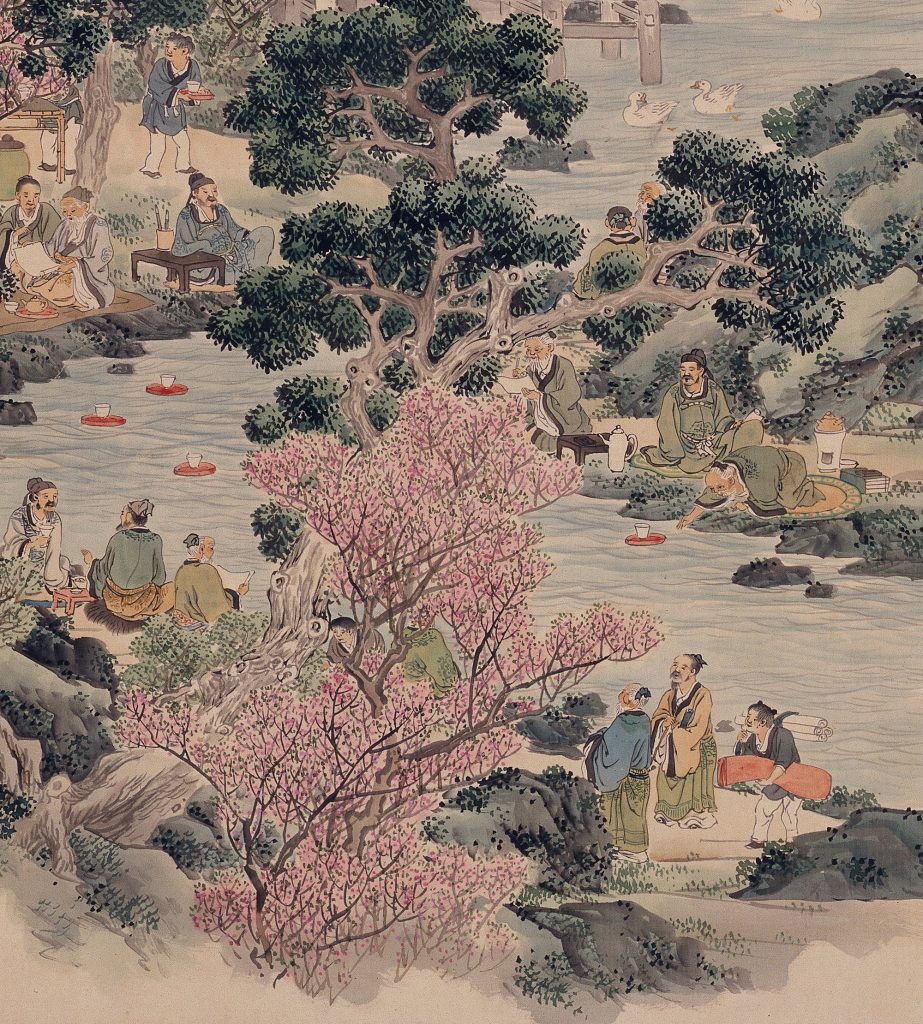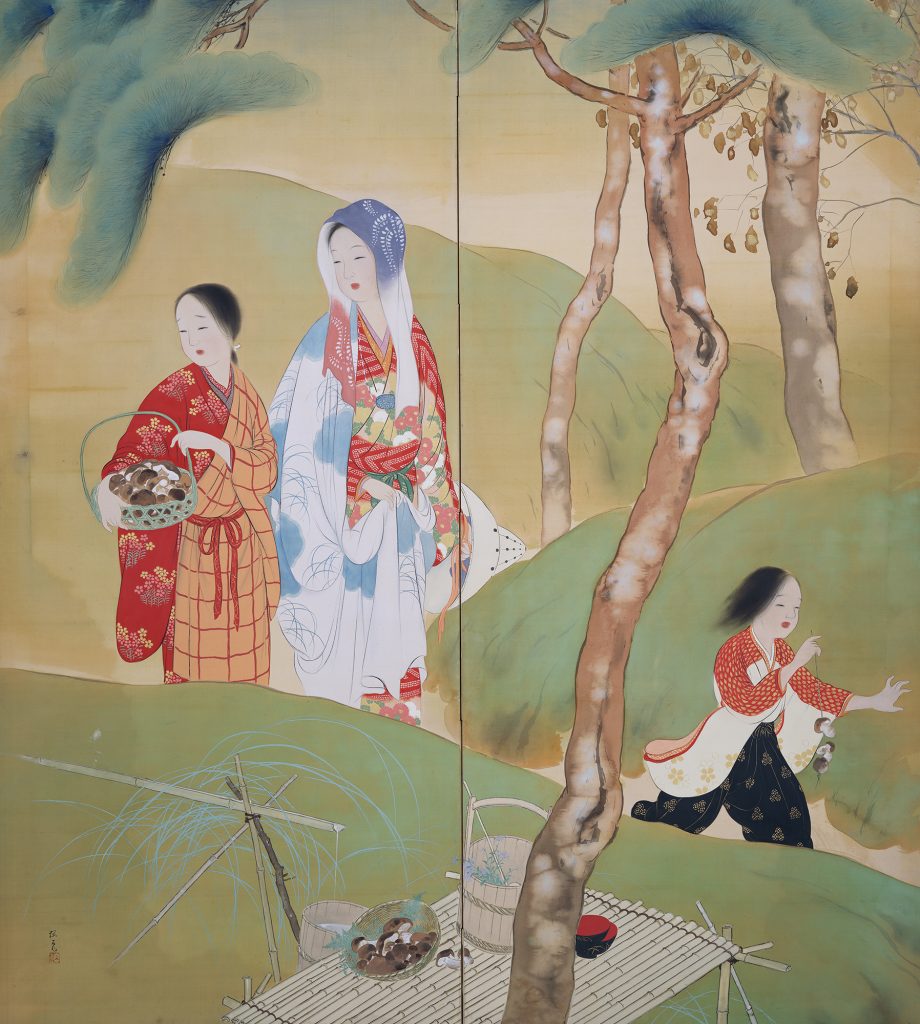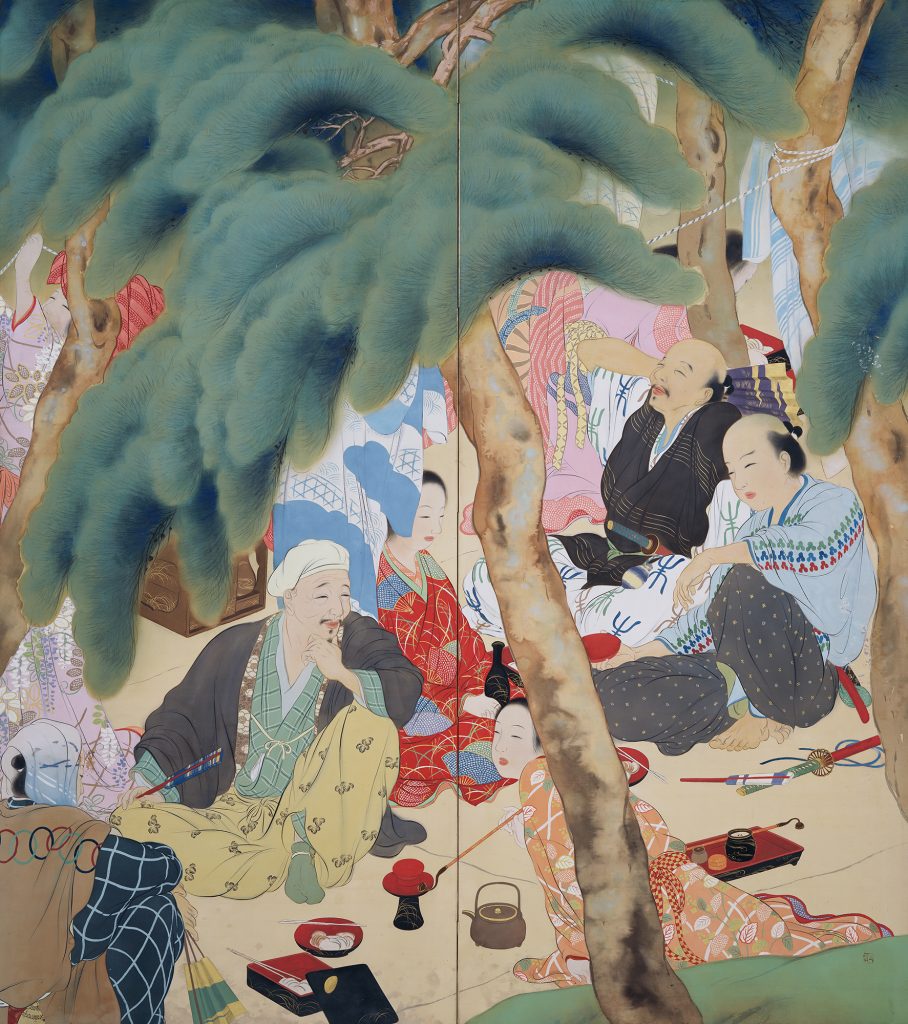Exhibitions
A Feast for the Eyes: Depictions of Dining and Drinking in Art

Welcome to A Feast for the Eyes: Depictions of Dining and Drinking in Art. With a focus on early-modern and modern Japanese works in Umi-Mori Art Museum’s collection, this exhibition uses genre scenes and depictions of flora and fauna to explore our relationship with food and drink down the ages.
Animals, seafood, fruit, vegetables, mushrooms and other familiar sources of food have long featured in Eastern and Western art. In pre-modern Japanese paintings, though, these subjects were chosen for their auspicious connection to rich harvests, good hauls of fish, and the prosperity of one’s descendants as much as for their beauty. Good examples include works portraying schools of swimming fish or ripe melons and other fruit, all motifs that trace back to auspicious designs from China.
These motifs lost some of their auspicious significance entering the modern era. Painting methods based on sketching now became popular, with painters also focusing more on their own modes of artistic expression. Despite these changes, artists continued to represent the shifting seasons through portrayals of seasonal seafood and produce.
Merrymakers sharing cups of sake and eating tasty delicacies are also depicted alongside seasonal features in portrayals of amusements, including genre scenes and paintings of famous places, with many works also showing people cooking or preparing for feasts. Pictures of lively banquets charm us with their portrayals of people having a rip-roaring time with their friends as they gorge on bountiful seasonal delights.
The exhibition is divided into four chapters. Chapter One is entitled “Behind the Scenes” and it introduces some genre scenes of people cooking or shops selling ingredients, for example. Chapter Two (“The Happiness Found in Food”) and Chapter Three (“Savoring the Beauty of Food”) both focus on representations of flora and fauna, while Chapter Four (“Welcome to the Banquet!”) returns to genre painting to show revelers having fun while drinking and dining with friends. We hope you also have fun as you view these scenes of people enjoying the rich blessings of nature and living life to the full.
Finally, we would like to express our deepest gratitude to those who loaned their valuable artworks and to everyone whose cooperation made this exhibition possible.
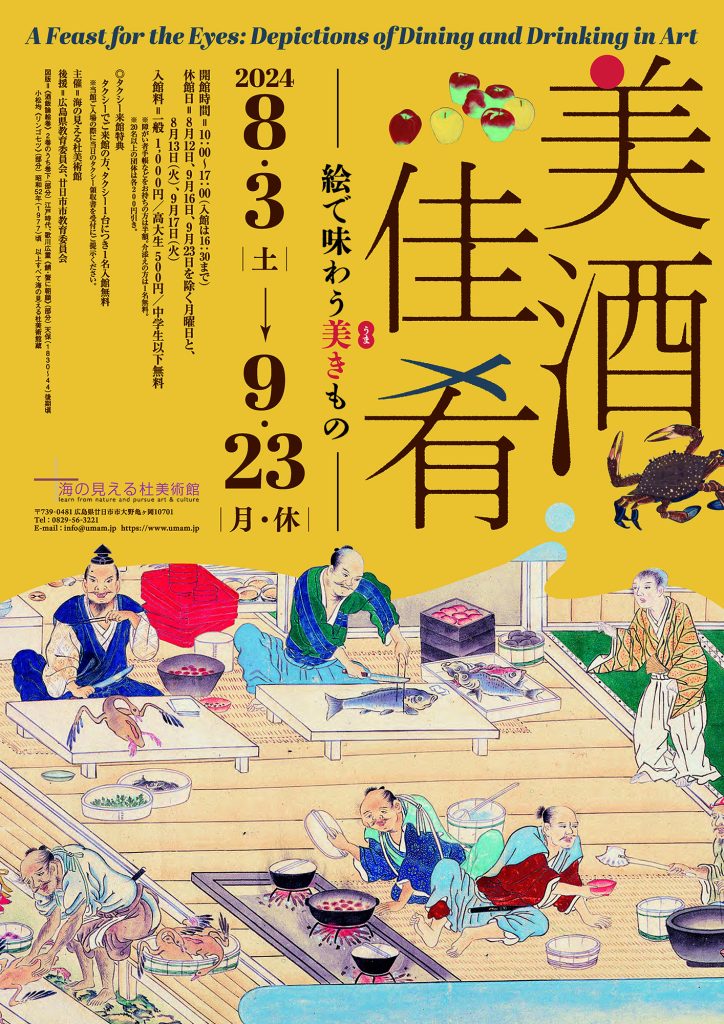
General Information
Hours: 10:00-17:00 (Last entry: 16:30)
Closed: Monday (except August 12th and September 16th, 23th), and August 13th, September 17th
Admission: General admission: 1,000 yen, High school/university students: 500 yen, Junior high school students and younger: Free
*Admission is half price for people with disability certificates, etc. One accompany person is admitted free of charge.
*Groups of 20 or over will receive a discount of 200 yen per person.
Venue: Umi-Mori Art Museum (10701 Kamegaoka, Ohno, Hatsukaichi, Hiroshima)
With the support of: Hiroshima Board of Education and Hatsukaichi City Board of Education
Chapter 1: Behind the Scenes
Just like today, people in the past were obsessed with dining and drinking. The preparation of the fruits of land and sea often featured in art alongside depictions of banquets. This first chapter introduces some early-modern genre scenes of people cooking and stores selling ingredients, for example.
Of particular note are the sumptuous genre portrayals of food and drink in Shuhanron Emaki (Illustrated Handscroll of the Merits of Sake and Rice), an illustrated scroll originally created during the Muromachi period (1392–1573). This work vividly recreates bustling scenes of people preparing sake, side dishes and rice by cutting up chicken and fish, warming up sake, and using chopsticks to select grains of rice, for instance. Genre depictions of dining and drinking were not limited to paintings either. They also appeared in printed books like Nihon Sankai Meisan Zue (Illustrated Guide to the Noted Products of Japan’s Mountains and Seas), which introduces local specialties from across Japan, while cookbooks like Kaiseki Ryori Saikubocho were also produced in volume during the Edo period (1603–1868).
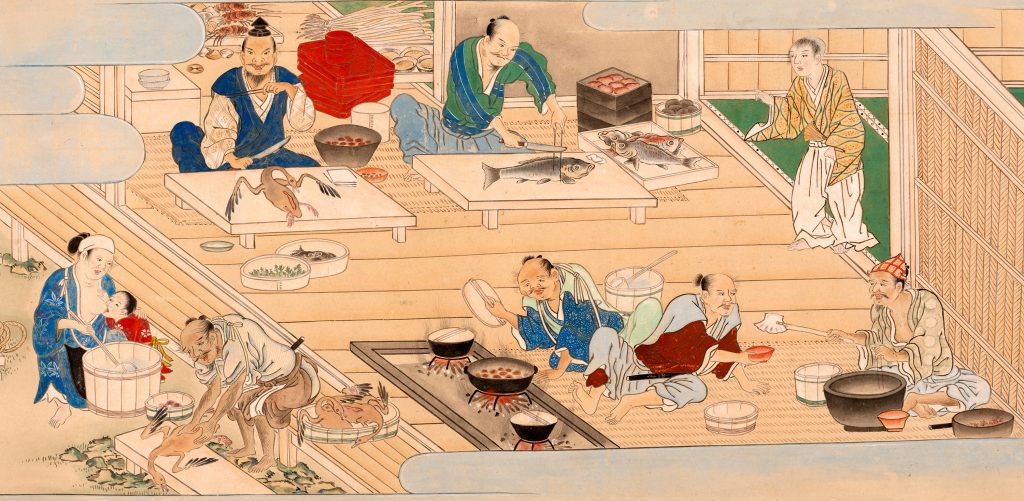
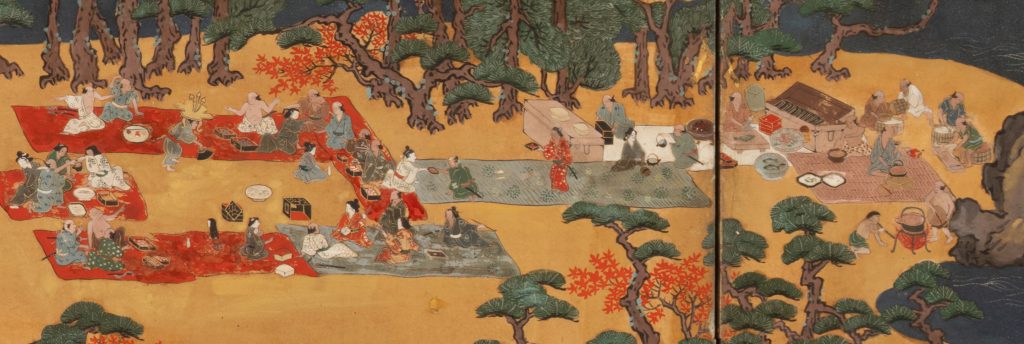
Chapter 2: The Happiness Found in Food
Dining and drinking are among life’s great joys. However, in the pre-modern period in particular, depictions of the food received through nature’s blessings often had a deeper significance, imbued as they were with prayers for rich catches, bounteous harvests and the prosperity of one’s descendants. Good examples include Kaika Horyo-zu (The Rich Haul of the Rivers and Seas) and other works that portray schools of swimming fish or ripe melons and other fruit, all motifs that trace back to auspicious designs from China.
Annual offerings of seafood and crops allow us to experience the passing of time and the onset of the seasons with all five senses. These seasonal delicacies are often portrayed alongside seasonal flowers and birds to show the changing face of nature across spring, summer, autumn and winter. Utagawa Hiroshige (1797–1858) is widely known for his landscape prints, but he also left behind a number of richly lyrical creations that combine comic tanka poetry with pictures of fish and seasonal plants.
Please enjoy these works brimming with human prayers and paeans to the bounties of nature.
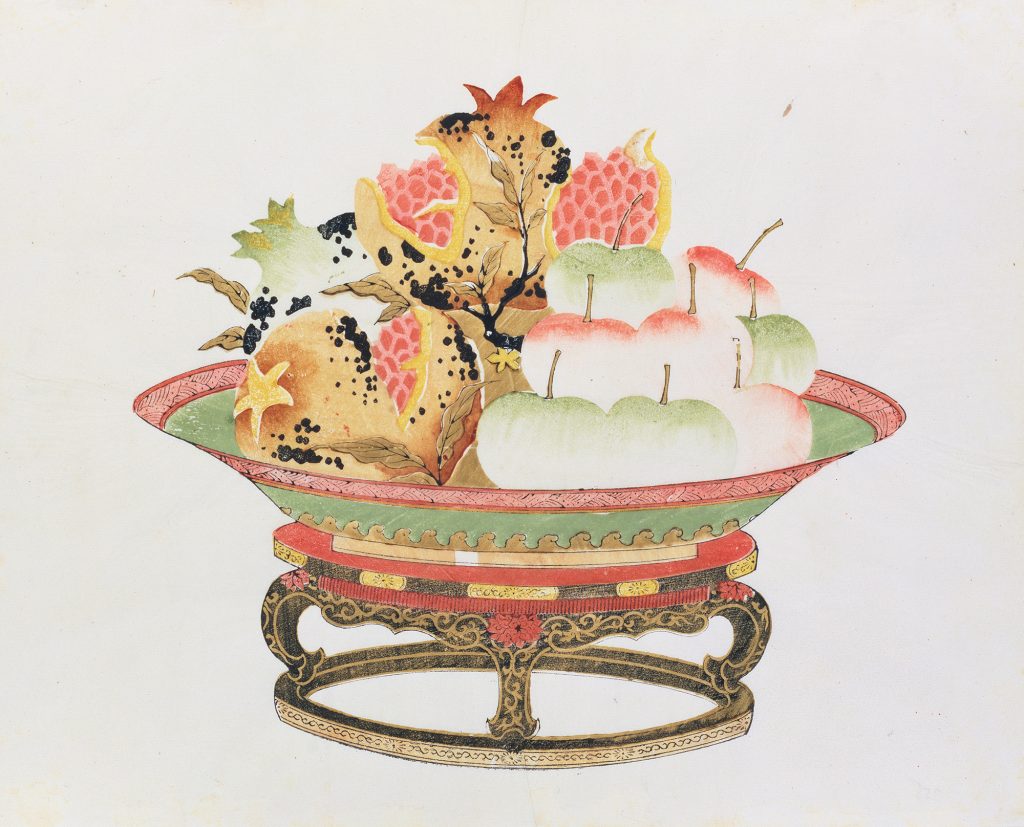
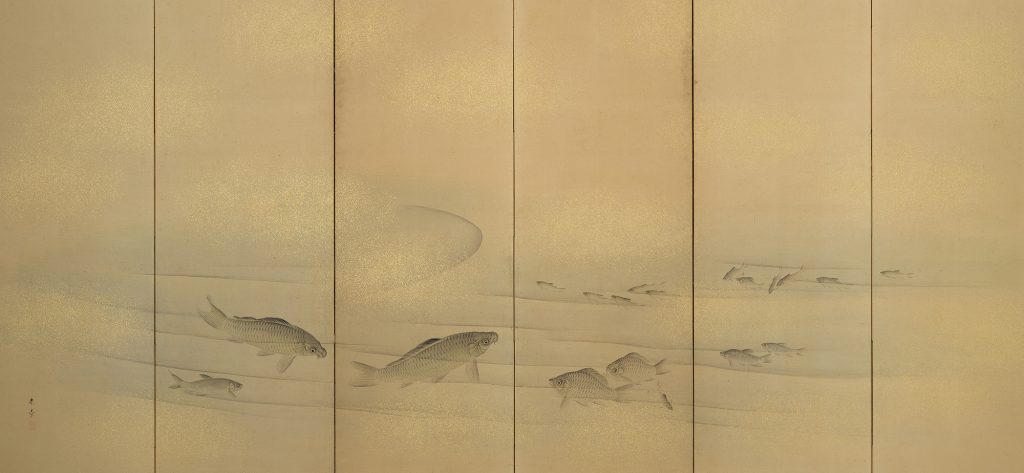
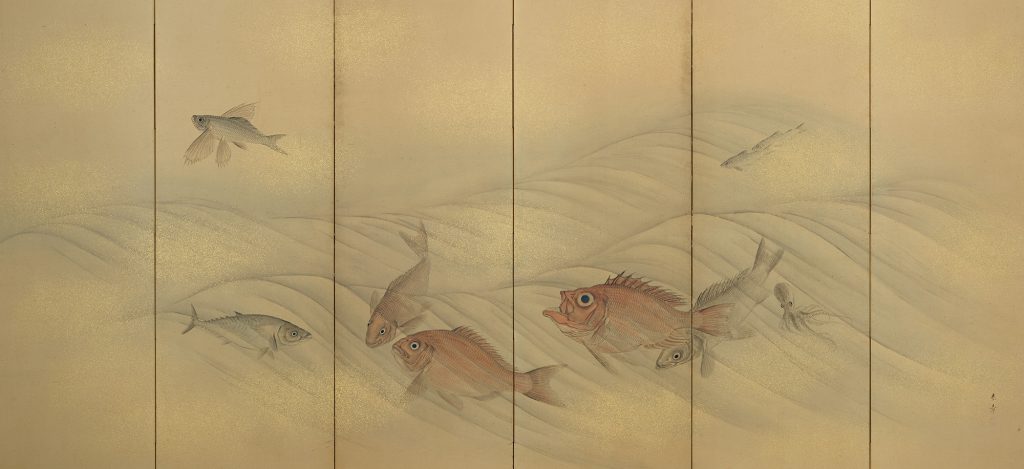
Chapter 3: Savoring the Beauty of Food
The tradition of portraying auspicious iconography imbued with prayers for abundance and the prosperity of descendants continued into the modern age, though artists also began to focus on the beauty of food itself as they strived to develop their own forms of expression. This desire to paints things more naturalistically, to capture the very texture, weight and ecology of the subjects, is apparent in works by several painters from this time. These include Takeuchi Seiho (1864–1942), who portrayed tiny ants using the auspicious framing of a pair of melons, and Murakami Kagaku (1888–1939) and Ono Bakufu (1888–1976), two artists who faithfully depicted fish based on meticulous observation. We can sense an era-transcending beauty in the expression of these modern painters, one that derives from the appearance of the changing seasons, as revealed by these seasonal foods.
We hope you enjoy the diverse beauty of nature as revealed in the paintings by these modern masters.
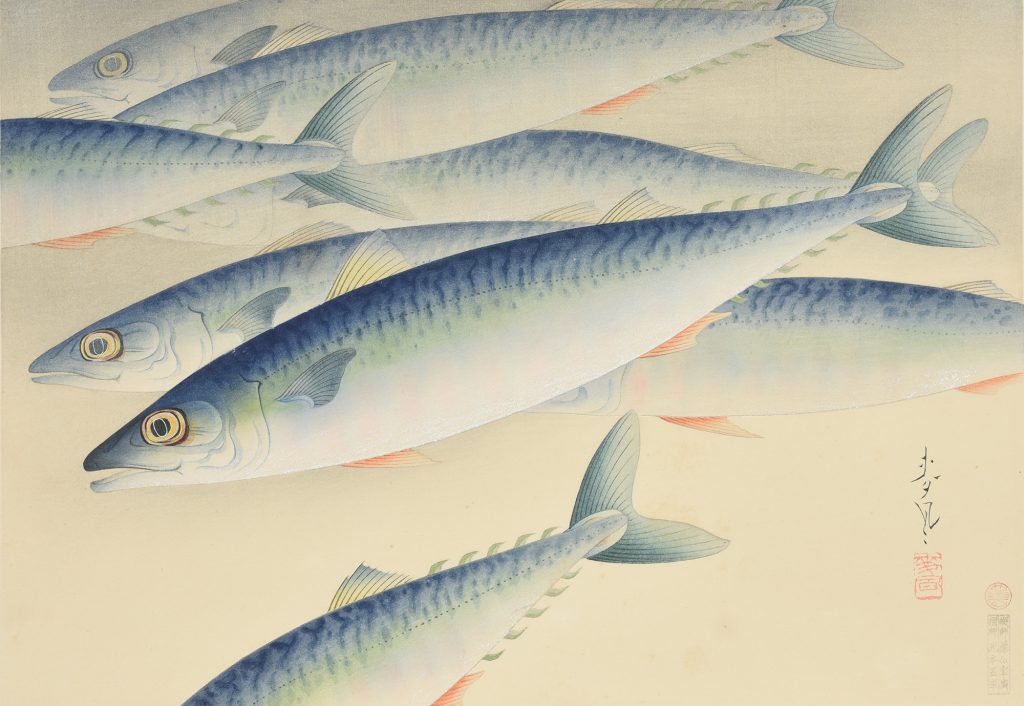
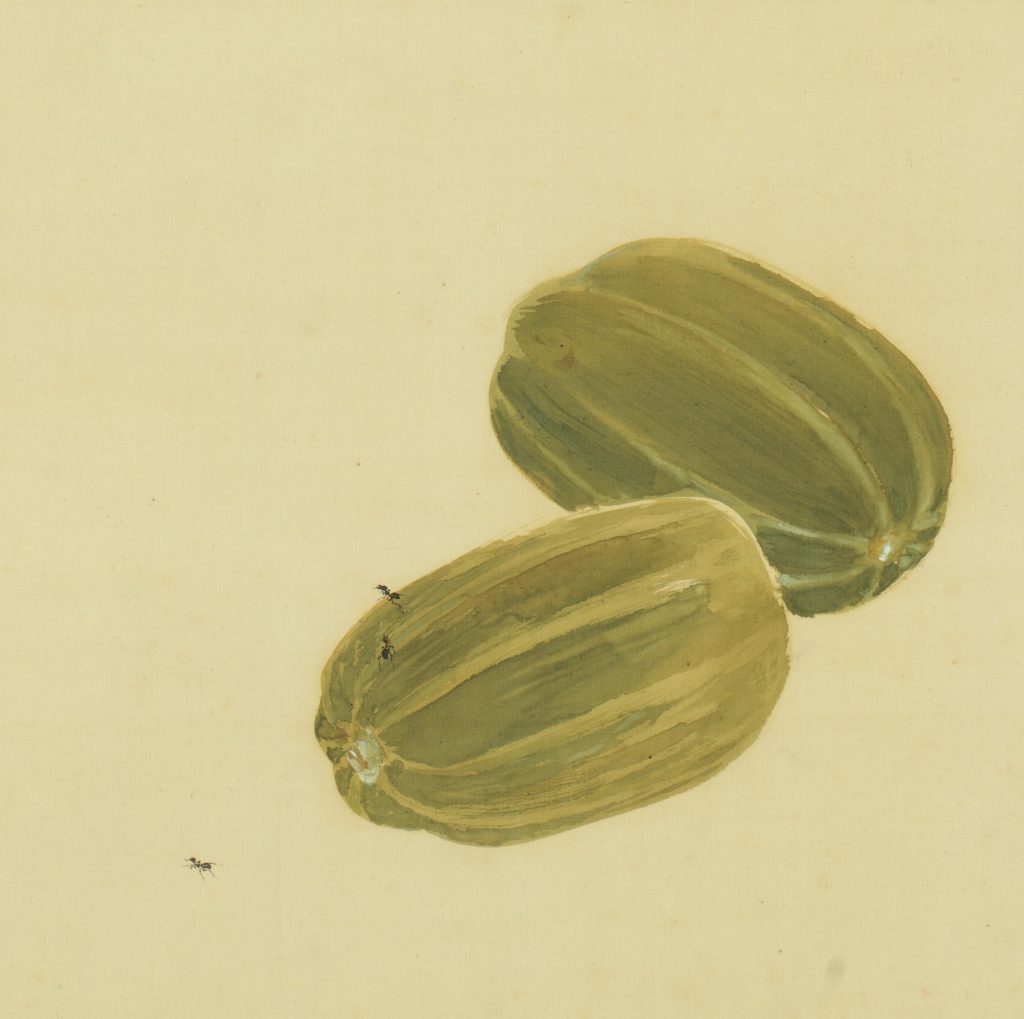
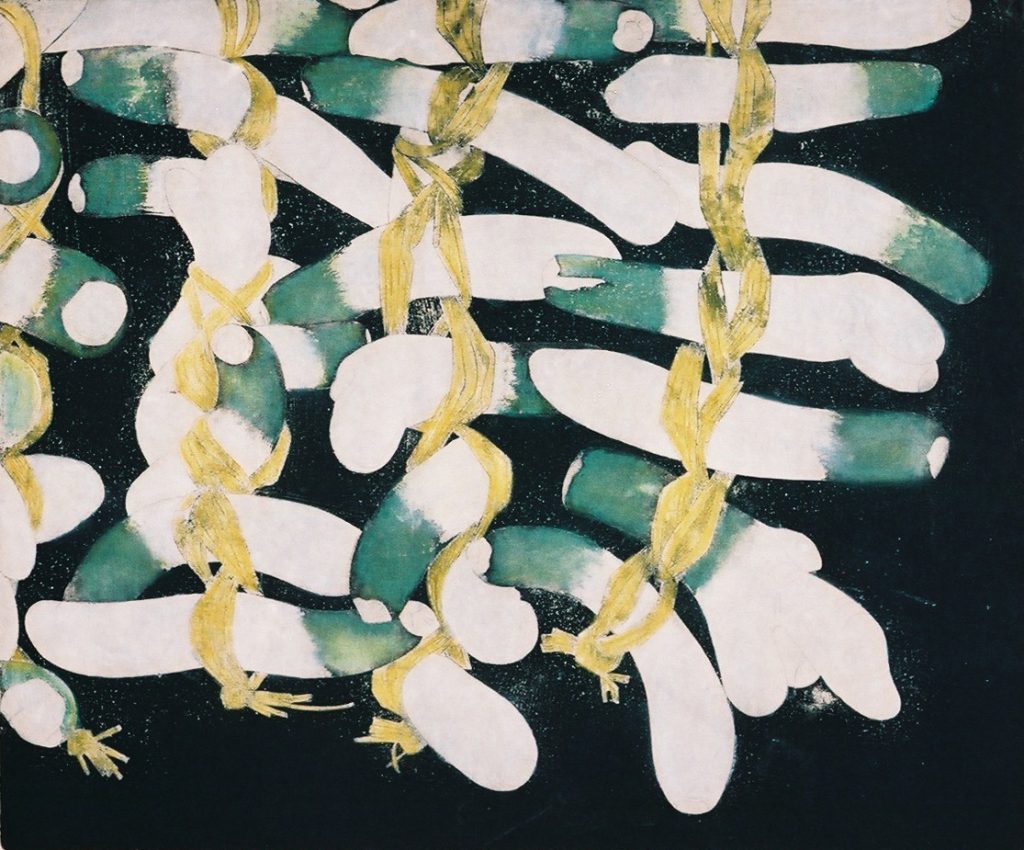
Chapter 4: Welcome to the Banquet!
If you managed to get hold of some great sake and seasonal food, could you enjoy it alone? Sure, there is a certain charm to savoring things by ourselves, but nothing beats partaking in the company of family, friends, colleagues or even people we have just met! The works in this final chapter depict these enjoyable occasions when we feast together.
Since ancient times, bonds have been strengthened through the act of dining and drinking together. Back in the day, people used to entertain guests at banquets or tea parties held on the occasion of religious ceremonies or annual events. Sometimes there would be over-indulgence. This seems to be the case with the elegant personages in Inchuhassen-zu Byobu (Eight Drinking Hermits), though the revelers are still depicted with smiles on their faces as they savor the seasonal delicacies and drink in the atmosphere of the changing seasons. Perhaps their shared delight derives not only from the deliciousness of the fine food and drink but also from a happiness at having received the blessings of each season once again. In these depictions of folk feasting and having fun, we can sense the pleasure to be had from enjoying the passing of time in great company.
